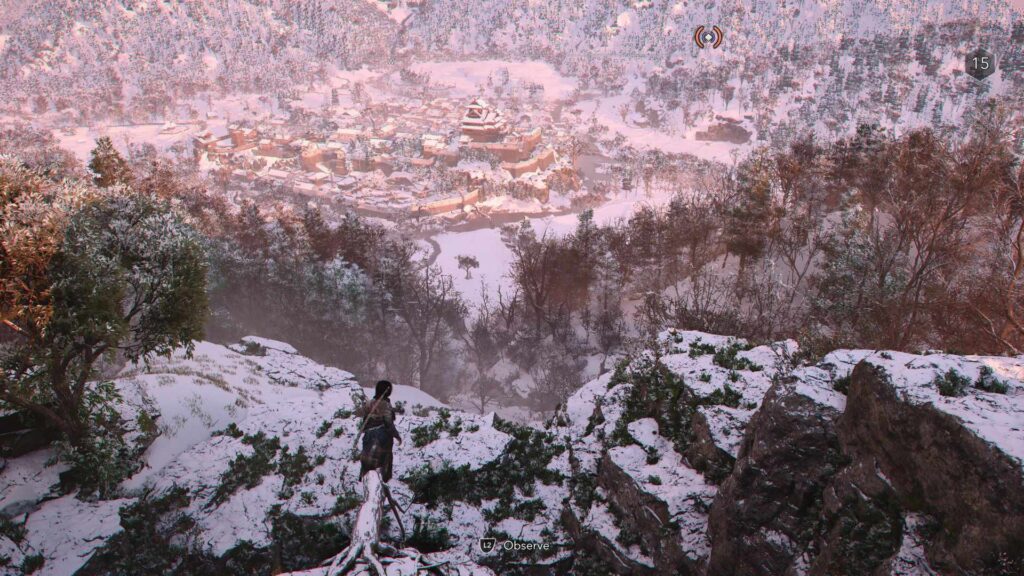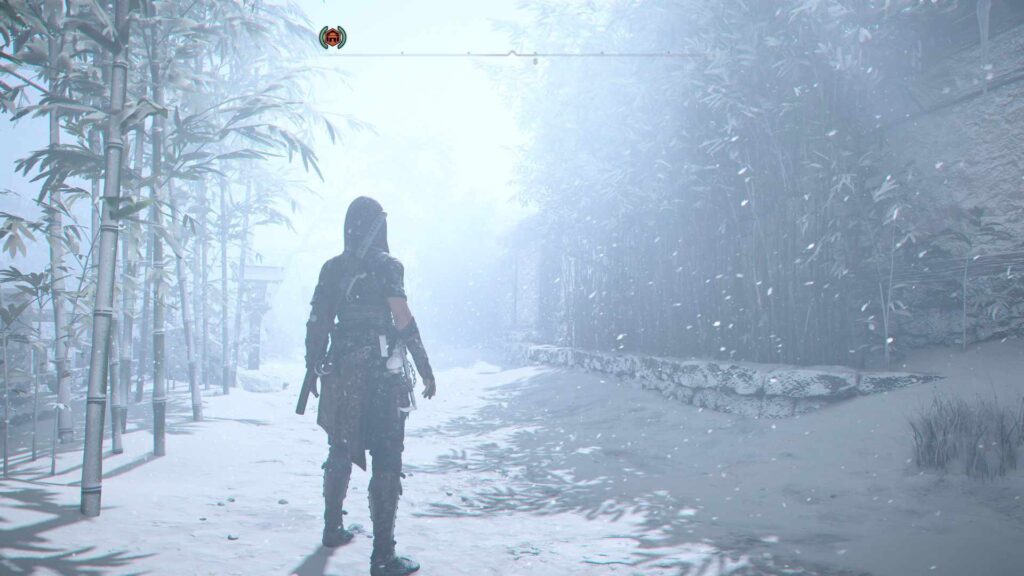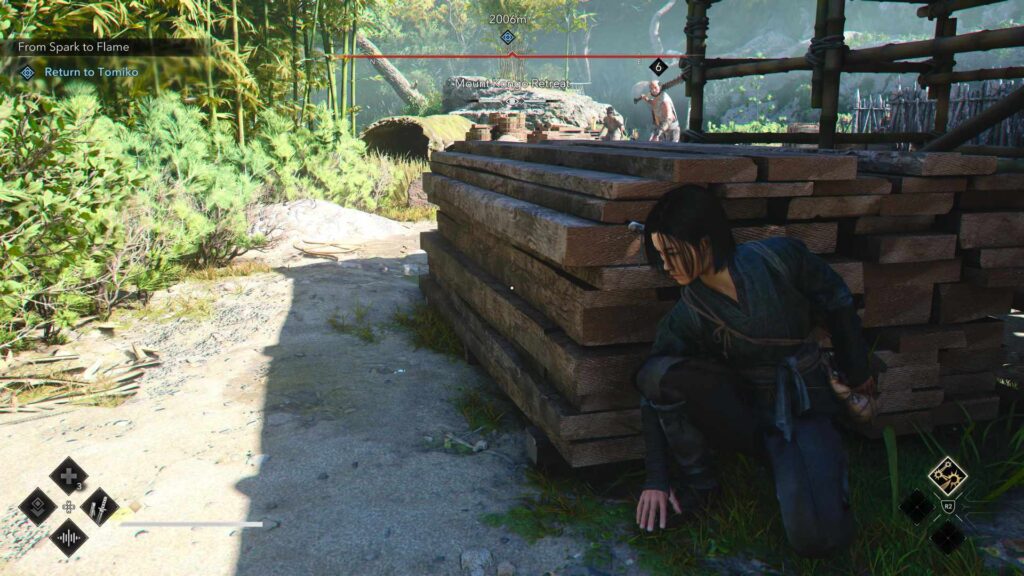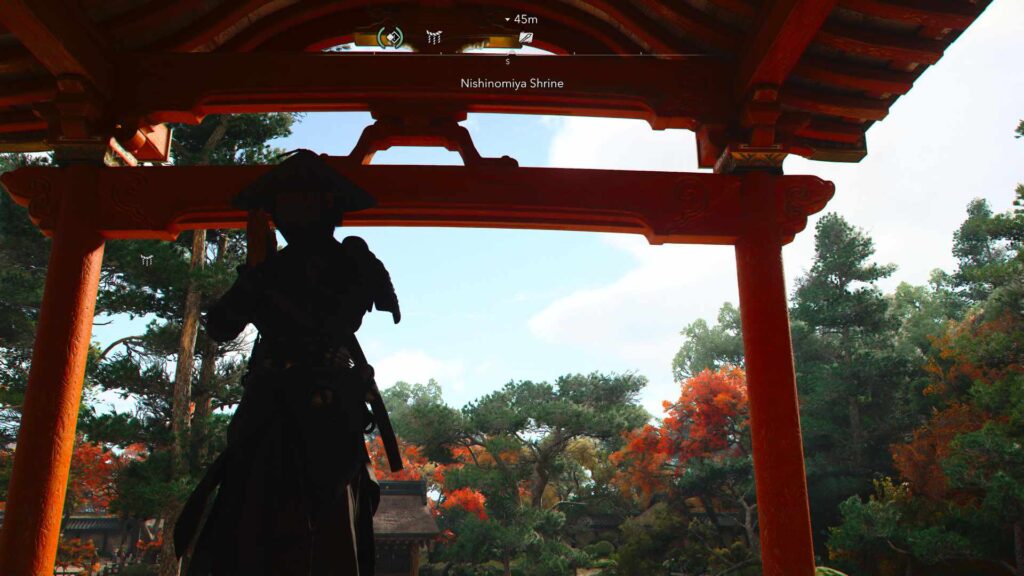I will admit that I have never been a big fan of the Assassin’s Creed franchise. While other people will point back to Black Flag as some transcending moment for the franchise, all that comes to mind for me is the parkour system dragging Edward into stupid jumps that he constantly gets stuck in while chasing people. The sailing mechanic was fun for the most part, so there was that.
While it wouldn’t be something I considered that high of quality, Assassin’s Creed Valhalla, against all odds, pulled me back into the franchise the way the Ezio had originally done for me. There was something about the game that did it for me, and it is the worst feeling in the world to know you can say that truthfully but lack the words to actually explain why. I wasn’t dragged into the RPG element, the map was way too big, and the story was insanely long… But my time in that England convinced me to 100 percent the map completely, and no other game in the series can say that.
Assassin’s Creed Shadows, for its part, may actually convince me to do the same. There is a lot here that makes me want to jump back in, journey across Japan, and take down my enemies oiner target at a time. There are also elements that want me to move on to the massively growing backlog I have on my desk as fast as I can. After Mirage, which received a six out of ten from yours truly, I was confident that the best days of the franchise were far behind it, but of all the things that Shadows achieved was the realization that this was not the case. There are elements to improve, many of which have been issues for the series for many an iteration, but at least now they have showcased they are moving in the right direction and this is a good thing.

The End of An Era
Assassin’s Creed Shadows is set at the tail end of the Sengoku period and largely tackles a period of time concerning the death of Nobunaga Oda and the rise and eventual death of his killer, Akechi Mitsuhide, who famously ‘ruled’ for 13 days. This will matter later for a point I will make, but right now, just know that this was by in large the event many consider to have begun the end of the Sengoku Period and gave a vacuum of power that allowed Tokugawa Ieyasu to create the Shogunite that brought forth the Edo period. These elements and characters are explored so even at the game’s most unrealistic, Assassin’s Creed has always had a great ability to begin a dialog about history, a testament to the blending of fact, fiction, and bizarre Alien god species.
By in large, the lead character of the game, at least the main protagonist, is a girl named Naoe, whose father is an assassin. You will be surprised just how long you will be playing just as her without the secondary character coming into focus. I would argue it is far too long. In an opening that felt particularly inspired by Lady Snowblood, and therefore to Americans coming across very Tarantino-esque, Naoe’s father is killed by a group of people, and a prized possession is stolen, which builds into the crux of the narrative. This is, by this point, an extremely predictable plot for the series. Track down the group of people one at a time, but the narrative beyond this is just not as engaging as the previous two.
The game doesn’t have great voice acting, I will admit that. While the cast is predominantly Japanese, which I can respect, there is this bizarre need for all the characters to feel like they only speak Japanese and were fed an English script. This being said, the game has a great Japanese dub that I switched to and never looked back. It’s hard to be fully made at the system when it offered me an acceptable solution I could easily implement. Where was Yong Yea when we needed him?
The narrative of the game flows almost entirely through the tracking down of your targets, with several missions occasionally being required to actually find them. In some cases, these are interesting, such as needing to prepare for a tea ceremony to find one of them, but in most this feels like a distraction that offers nothing in the way of forward progression. The one thing that came out of the series, especially the RPG era, has always been the blending of an overarching story that features your list of targets in it, and here this might be the weakest of those narratives thus far.
Side quests also exist but they are drastically overhauled from previous games. This is all in favor of a dynamic board to put all your tasks on in the main menu, which I will admit took me longer than it probably should have to figure out how it worked. Seriously, I actually loved the menus once I figured out how they were structured, but they were new, and change is scary. Side quests, on the other hand, have interesting narratives to explore in some cases when dealing with your allies, but a lot of them evolve into smaller target lists that play… Pretty much exactly how the others do.
This is doubly annoying, given Assassin’s Creed’s commitment to not telling you where your targets are. Now, in fairness, there are cases where they will tell you the exact location as to a person is. However, missions might do that, they still require you to locate that on the map manually. You might be told the name of a region, the direction in that region they are compared to major areas, and then the place on the map they are. These elements are often visible on different zoomed-in layers on the map. Despite knowing a bandit is at Hidetake Temple (as a made-up example), you still need to search a pretty big map for the boundaries of a region and a tiny pinpoint on the map to set your target. You get scouts to be able to make the waypoint appear, but they can cost money to replace uses of and… Again… You need to find the location on the map to deploy them effectively, and if you know where to temple, the guy is at is why would you need them.
Even then, there is a lot of wandering around for nothing using your observe or eagle vision to try to get the person or even items you’re looking for, which could involve bouncing around an area multiple times till it finally appears on your map in a tiny indicator. Overall, there felt like a lot of wandering around to complete any objective. Since the map is made up of a lot of areas that involve hunting items or specific enemies to complete as well, I did feel like there was way too much searching for that thing they sent me, rather than exploring the beautiful world.

The Changing of The Seasons
The world of Assassin’s Creed Shadows, now that we are on the topic, is absolutely beautiful to explore, and honestly, the most enjoyable world to watch spin around you every time you reach a synchronisation point. Open fields, lush mountains, and welcoming cities nestled among the landscapes. There is a lot to enjoy here and welcome, which is great because the world proves to be the guiding light that leads you through the game even more so than the story. You want to see it all, and you want to do it all. Even at a map locations most grindy, you are still exploring Japanese castles and shrines that feel natural in their existence.
The biggest twist on the open-world element is that this entire system can be enjoyed during a dynamic weather system that changes the seasons every so often. This keeps the world fresh and inviting. Returning to an area in the summer, going from bright and full of life only for a torrential storm to hit you mid-infiltration of a castle, or exploring destroyed shrine full of bandits with snow on the ground and the roofs, or bodies of water you skate across rather than use for hiding, can diversify the same experience to keep them fresh. And it really does.
If I had to make a complaint about this, and it isn’t that major, but as I stated above, the second arc largely revolves around Akechi Mitsuhide’s killing of Oda Nobunaga, which all took place over the course of 13 days, and yet the seasons shifted at least 100 times for me. This isn’t a bad thing, as they clearly don’t tie themselves to the narrative like Ghost of Tsushima did, but there were maybe ways to not set your game during a 13-day chunk of time that sees the seasons of the world go crazy.
The map of Assassin’s Creed Shadows is also much smaller than the previous game, with the whole map appearing to fit inside the space of Valhalla’s England, before you include the additional map of that game. While you can still find yourself walking a decent distance from point of interest to point of interest, it is far less painful than it previously was. Where it can be annoying is the amount of dense mountains that stand in your way. A clear path can actually involve you going back, backwards, to a new path that leads around the mountain. With your horse, you can pull up a pathfinder to make it easier, yet on foot, you will walk yourself straight into the mountains, and while they are beautiful to look at from afar, they can be blindingly dense up close and this will probably happen a lot as many points are at the top of these mountains, with you going on foot to the place 30 feet away only to realize you should look for a path 500 feet away to begin traveling up the right way.

In The Shadows, On The Frontlines
The entire first act of Assassin’s Creed Shadows sees the player take only the role of Naoe. While the storyline can probably be busted through in a few hours, probably, but nobody is going to do that. I got sidetracked tackling castles and the points on the map to the tune of enough levels to open the entire map up. The game still uses the region levels of previous games, which is mixed with a scaling level system which I have never liked and equally dislike here. This honestly does a disservice to Yasuke’s eventual inclusion because of how much he drastically shifts the combat.
In the strictest terms, Yasuke is a tank character, able to survive and deal more damage in favor of full frontal combat. This was an interesting shift when I got it, but soon the trade-off started to feel not worth it. By the time I unlocked him, Naoe could use a Kunai to kill most elite enemies from long range with one hit and assassinate even large enemies with no issues from the shadows. Also, she can do all of this from the rooftops. Yasuke has very little stealth he can do, though not absolute zero. This doesn’t detract from him being enjoyable to play as; the combat in both cases is enjoyable, but it limited the situations where you would realistically choose him over Naoe, which is a shame as I liked his character a lot.
The issue here is Yasuke; even when overpowered can’t one-shot a Daisho or elite enemy, and he is not very good at minimizing enemies that engage once a major fight begins. Also, around when he is introduced, a wanted system is also introduced, making the character instantly trigger combat with enemies even in places where it wouldn’t normally until the season changes. This comes across more as a system to force players to use both characters, but honestly… Naoe is much more effective at avoiding it and killing everybody she needs to, while Yasuke’s core gameplay almost inherently welcomes it. You can switch between them in these tasks, having Naoe take down alarms and then have Yasuke bust in, but, again, Naoe can just kill them all while she is doing this, so why wouldn’t she? Since Yasuka offers little verticality exploration also tends to lean towards Naoe since some synchronization points aren’t reachable.
Yasuke is more viable in the main story missions, which often throw tasks that involve full-frontal attacks as you attempt to find the next person on your list of targets. Once you find that person, too, you inevitably end up in a boss fight against them, again, offering Yasuke a chance to shine since he is able to handle whatever crowd you might need to control during and survive boss damage much more efficiently.
While the skill tree returns, it is pretty much what you might expect. There are some cool switches to this, such as weapon abilities that can be used in combat to give you the leg up or ninja and samurai tools to help you. This being said, expect double assassination to appear on the list once again. The benefit to this was Yasuke’s skill tree, which actually does make him feel more like an anomaly in the Assassin’s Creed series, which is a good thing. Since both versions of the combat are fun, testing out any abilities you gain is always a worthwhile endeavor, especially Yasuke’s kick.
When playing Assassin’s Creed, the parkour system feels untouched for 15 years. Getting caught on objects while infiltrating is a norm, which is especially annoying when trying to assassinate an enemy two inches from you only to climb a non-walk and bounce right in front of him. There is also an unresponsiveness to some triggers, such as the assassination or block button, which I often hit only to get zero response in the moment, turning a situation I had some semblance of control into one spiraling out of control.

Verdict
There are issues present in Assassin’s Creed Shadows, for sure. In the RPG era of the series, despite some interesting uses of history, this is the weakest story the series has had in years. While a lot of Chanbara films tackle the topic of revenge, I would point out many of the best films in the genre did not and feels a little seterotypical, especially give some of the narrative beats feel more Tarantino’s Kill Bill rather that Lady Snowblood, feeling like a game of telephone with classic themes. Unlike films, Assassin’s Creed Shadows lets you step into a beautiful Japanese landscape to explore and get lost in, and I assure you, you will.
Combat is fun to participate in both forms, from Naoe’s stealth to full-frontal combat, and as Yasuke bashes waves of enemies. The game does Yasuke a disservice, though, allowing for 40 hours or more of gameplay before him so that Naoe can become a powerhouse with the added benefit of stealth and verticality, both elements Yasuke can’t really do. Parkour is about as good as I expect, which is to say annoying, with characters getting caught in trying to move through it, especially trying to get off it to take down enemies. There is also a responsiveness issue that I have noted in prior games.
Most of the issues present in Shadows have been there through multiple iterations and I hope they do get fixed in the future. All this being said, though, there is one important point to make here, and it’s arguably the most important: I had fun. That’s saying some, considering I haven’t had fun with- forget Assassin’s Creed, really any Ubisoft game, in quite some time. I hope this is a good sign moving forward.
Remember to follow us on Twitter and Facebook to keep up to date on everything we have going on!
Review For PlayStation 5, Also available for Xbox Series S/X, and Windows PC
Developer: Ubisoft Quebec
Publisher: Ubisoft
Release Date: March 20th
Take the role of an Assassin and a Samurai as they hunt down a organization shrouded in mystery.
PROS:
+Enjoyable Lead Characters
+Beautiful Open-World
+Fun Combat
+Weather and Season System
+Great Japanese Dub
CONS:
-Weak English Dub
-Generic Story
-Yasuke done a disservice being introduced late
-Lackluster Parkour
-Some Unresponsive Controls
-
Assassin's Creed Shadows